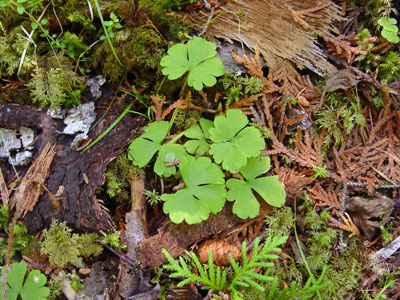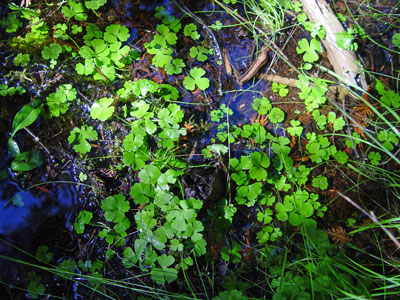DACF Home → Bureaus & Programs → Maine Natural Areas Program → Communities, Plants, and Animals → Rare Plants → Coptidium lapponicum

Coptidium lapponicum (L.) Gandog.
Lapland Buttercup
- State Rank: S2
- Global Rank: G5
- State Status: Threatened
Habitat: Subarctic regions, moss and wet woods, usually under cedar. [Conifer forest (forest, upland); Forested wetland]
Range: Subarctic; locally south to northern Maine and west to British Columbia, Alaska, and northern Asia.
Aids to Identification: Each slender flowering stem, 10-20 cm tall, is accompanied by one or two three-lobed leaves with long petioles, all rising from an extensively creeping rootstock. The flower, 8-12 mm wide, has 5 or 6 yellow petals and later develops into a rounded head of achenes. This species has only 3 (rarely 4) sepals. Most crowfoots have 5 sepals.

Ecological characteristics: In Maine, at least, this plant is apparently restricted to heavily wooded sphagnum bogs, and is never abundant, but rather is distributed in small, inconspicuous patches.
Phenology: Flowers June - July.
Family: Ranunculaceae
Synonyms: Ranunculus lapponicus L.
Known Distribution in Maine: This rare plant has been documented from a total of 12 town(s) in the following county(ies): Aroostook, Piscataquis.
Reason(s) for rarity: Disjunct from principal range, habitat naturally scarce.
Conservation considerations: Appears to be fairly secure at its few known locations. The effects of logging are unknown, but partial removal of the canopy would be less likely to be detrimental than would be complete canopy removal.
For more information, see the Native Plant Trust's Conservation Plan for Ranunculus lapponicus.